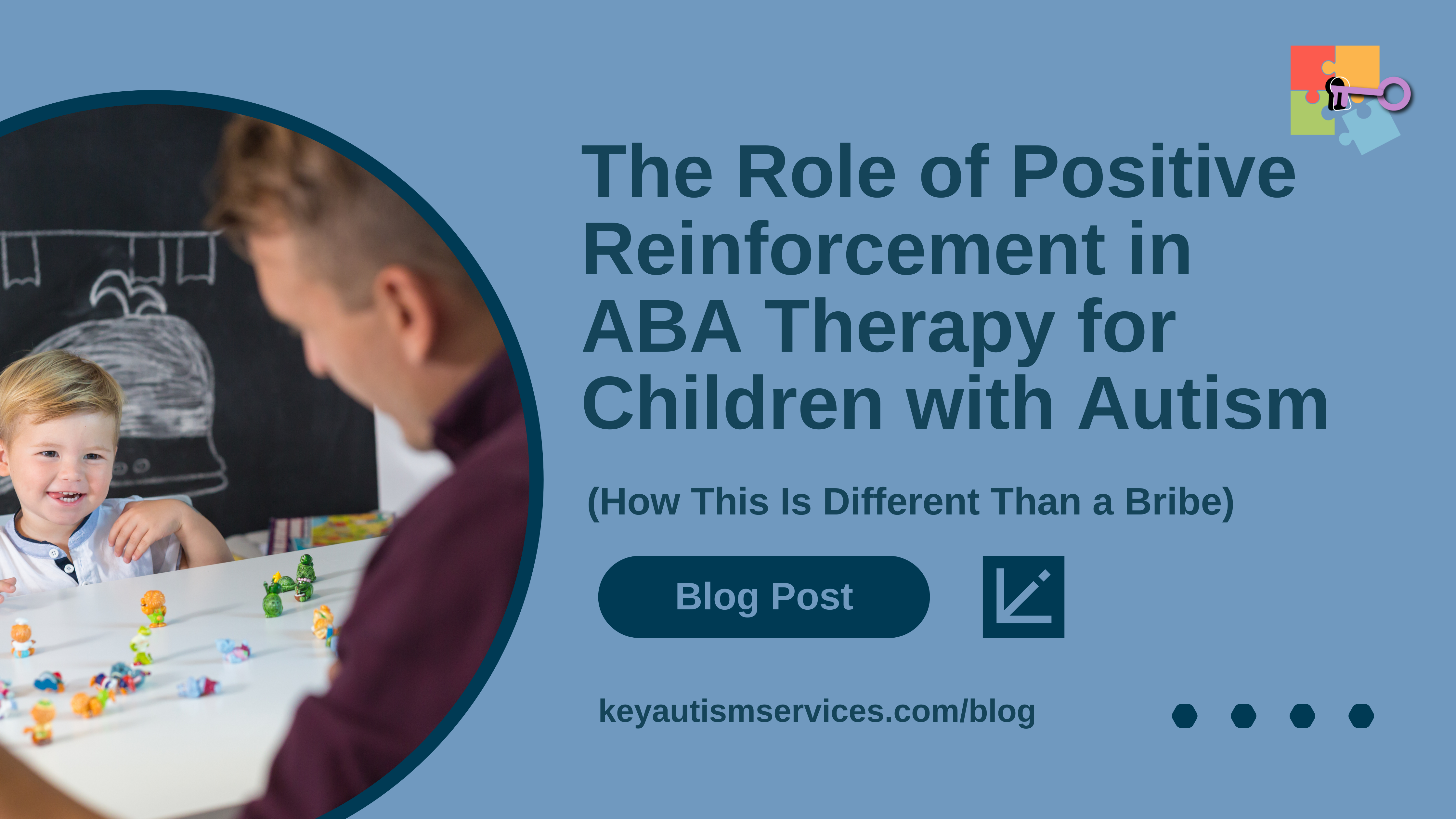Applied Behavior Analysis is a Behavioral Science that has abundant research backing it. There are several concepts that can be explained in scientific terms and yet simplified for the common person. The concern arises when the simplified terminology is mistaken for other commonly used words. One such misconception is the understanding of the concept of Reinforcement. Many people often get reinforcement and bribe confused. These two concepts are quite different and need to be understood before incautiously using them and referring to them in a conversation when trying to justify the behaviors of individuals. This confusion has been commonly seen in school systems and in home settings where ABA is yet to be fully accepted and understood.
What is reinforcement?
The concept of reinforcement goes back to 1930’s, when B. F. Skinner, an American psychologist at Harvard University, proposed the reinforcement theory of motivation.
“Behavior which is reinforced tends to be repeated; behavior which is not reinforced tends to die out or be extinguished.1”– B. F. Skinner
The Reinforcement theory involves two important psychological concepts: operant behaviors and operant conditioning.
Operant behavior implies behavior that elicits or causes the consequences in reinforcement theory. Consequences are neither only good nor bad, but merely what happens after a behavior occurs.
Operant conditioning implies a learning process that focuses on reinforcement’s role in conditioning.
Operant conditioning process involves consequences that follow an individual’s behaviors, which then could shape the behaviors. There are diverse types of consequences that can contribute to the change of an individual’s behavior. The most prominent ones are: Positive reinforcement, Negative reinforcement, punishment, and extinction. Under reinforcement, rewards are provided to increase behaviors that are desirable while punishments are provided to decrease or reduce the behaviors that are undesirable. Use of Extinction procedure is done by withholding any kind of reinforcement to decrease a learned behavior.
Examples of reinforcers:
A reinforcer can include anything that strengthens or increases a behavior. Examples include Social praise such as giving verbal praise, giving a high-five, patting someone on the back, hugging, etc.; Tangibles such as Toys, tokens (if using a token reinforcement system), candy, etc.; Activities such as Playtime, board games, free time, taking a break, listening to music, being left alone, etc. One must remember, however, that even inappropriate behaviors can be reinforced.
Offering your child some iPad time after they take some bites of the meal that has been prepared by you. You could use a token system or portion out the bites so that when they eat at least five bites, they can gain access to the iPad for 5 minutes. What you are instructing your child is that appropriate behavior is rewarded. Your child will engage in appropriate behaviors to get desired rewards in the future. Several positive skills can be taught using the concept of reinforcement.
What is a Bribe?
According to the Oxford Dictionary, the definition of a bribe is as follows:
As a verb: To persuade (someone) to act in one’s favor, typically illegally or dishonestly, by a gift of money or other inducement.
As a noun: A bribe is a sum of money or other inducement offered or given to bribe someone.
Examples of bribes:
In terms of behaviors seen commonly at home, a bribe is often used to stop a behavior from occurring before an instruction is given or during the occurrence of undesirable behavior. Bribes are mostly used when we do not have time, lose tolerance to waiting the child out, are on a schedule, need to get something done right away, etc.
Offering your child, a treat or iPad time if they stop whining or crying when asked to have their dinner. This might work in the moment, but whining and crying will occur again when you try to offer your child their next meal. The child often controls the situation and knows when to “turn on” some of those challenging behaviors so that they can get what they want.
The most significant differences between Reinforcement and Bribe include:
- Reinforcement is used for the benefit of the receiver while a Bribe is used mostly for the benefit of the giver.
- Reinforcement is used typically to increase the likelihood of the individual engaging in positive behaviors in the future while with a Bribe, it will result in challenging behaviors occurring more often in the future for the receiver to gain access to the bribe.
- Reinforcement is given upon the completion of expected positive responses while a bribe Is typically given prior to or during the engagement in a challenging behavior.
- Reinforcement is a planned process and is usually done ahead of time, taking into consideration, the individual’s preferences, while Bribes are often given in the moment and are a one-time exchange of items or attention when challenging behaviors occur and an immediate solution is sought.
- Reinforcement outcomes are typically positive and support positive behaviors, while Bribes may be illegal, and outcomes are typically not in regulation with rules and regulations.
- Reinforcement could vary and are chosen by the receiver, but the giver is in control while Bribes are assumed and manipulated based on desired outcomes for the giver as well as the receiver, but the receiver is in control.
- Reinforcements can be given guilt-free while bribes usually or may eventually result in guilt for the giver.
- Reinforcements are used to shape an individual’s skills such as building tolerance, waiting, making choices, sharing, etc. Bribes do not change or add to a learner’s repertoire of skills.
- Reinforcement increases, strengthens, and maintains appropriate behaviors long -term while Bribes may stop the challenging behaviors in the short-term but can result in those challenging behaviors occurring more often in the long-term.
Tips for increasing use of Positive Reinforcements with your child:
- Observe your child and encourage them to continue engaging in appropriate behaviors by recognizing and rewarding them for what they are doing. Offer a desired treat or hugs or time with them when they finish cleaning up their toys or room or making the bed, etc. What you offer them should be something they value.
- Provide opportunities for them to be successful. Give them tasks that you know they can do so that they gain self-confidence and motivation. Provide acknowledgement and rewards to show that you notice them and value their efforts.
- Be aware of precursor behaviors, triggers, or signals that indicate that whatever task they are required to engage in is challenging or undesirable for them. Provide options to break down those tasks into smaller and more doable ones. Give them options to ask for help, take a break, or even simple single steps to complete at a time. A visual reinforcement system can be used to support progress.
- Catch yourself and reflect whether what you are offering is bribe or reinforcement. Are you trying to solve the challenge as a short-term result, or do you want more effective long-term results? Are you in control or is your child in control of the situation? Is what you want accomplished benefiting you or your child?
Do not be discouraged. Life is an ever-learning opportunity so believe in the power of reinforcement for that is sure to be more successful if you want to increase positive behaviors for your child and teach them valuable skills and behaviors. Reach out to your ABA team to help strengthen your understanding of important ABA concepts and correctly apply them in your child’s life. The benefits are worth the effort. Contact Key Autism Services to learn more about ABA Therapy.





